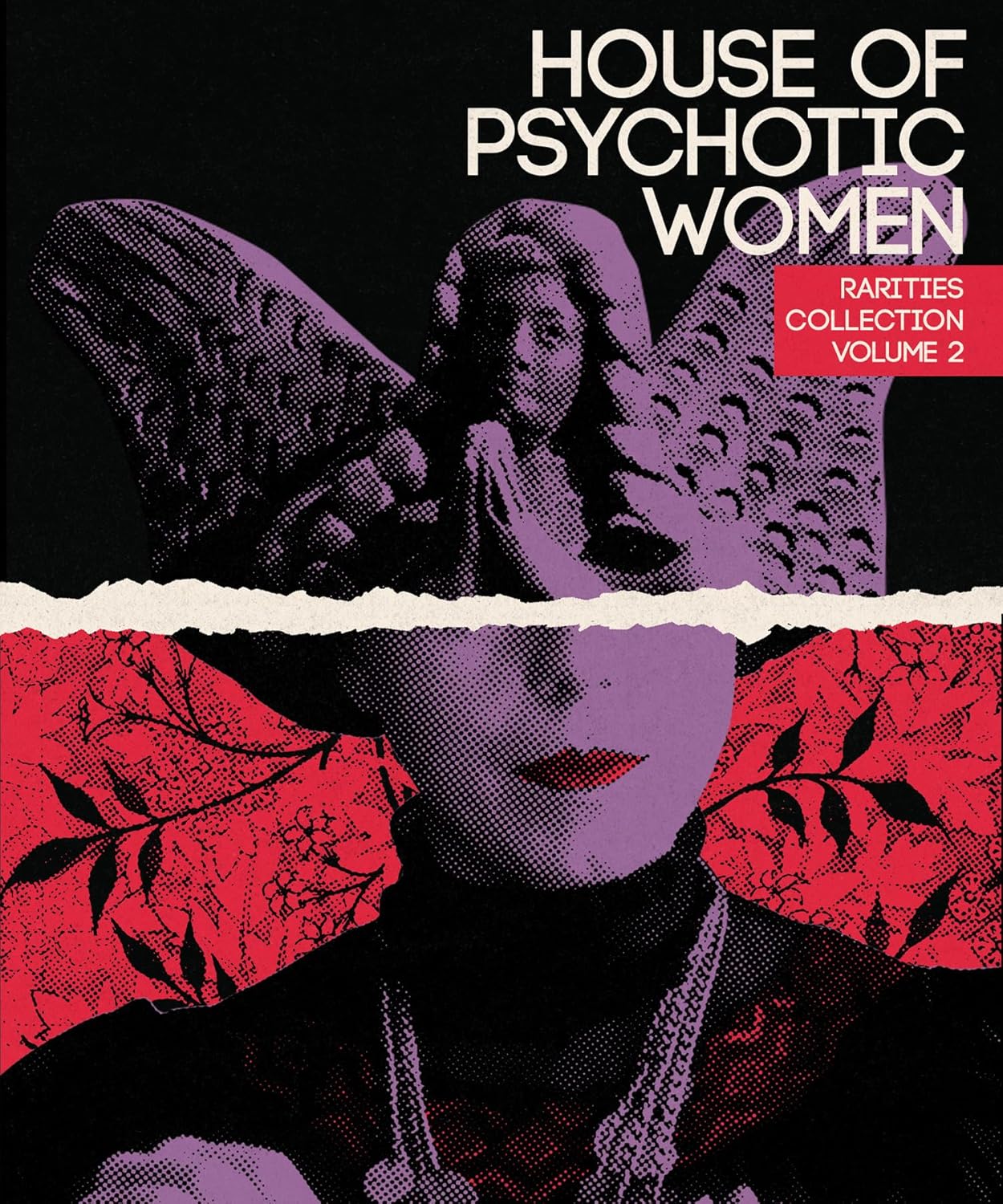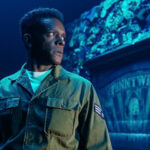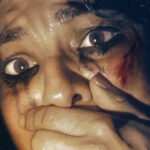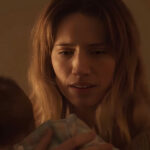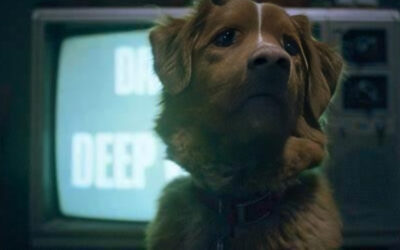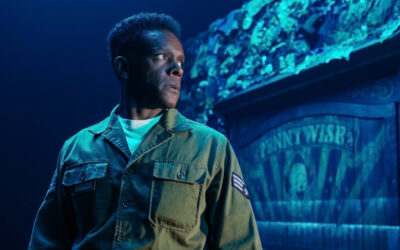Horror scholar/author Kier-La Janisse, author of House of Psychotic Women: An Autobiographical Topography of Female Neurosis in Horror and Exploitation Films, is back with a second collection of off-kilter ladies doing things on their own terms (to catch up on the first volume’s offerings click here)!
Severin’s second House of Psychotic Women compilation contains four films, each on a separate Blu-ray, spanning the years 1959 – 1995, and, as is my way, I’m going to feast my eerie eyeballs on each in good order!
First up comes 1995’s Butterfly Kiss…
Eunice (Pulp Fiction‘s Amanda Plummer) loves the ladies, the Bible, and absolutely putting a murder on any unfortunate gas station cashier that isn’t the Judith she’s searching the land for.
After one such fruitless search, Eunice douses herself in gasoline before befriending the attendant, Miriam (Saskia Reeves), who invites her to stay the night at her flat.
That goes fairly well, as after our heroine displays her pierced and chained body and makes love to Miriam she heads out the next morning to continue her Judith hunt/kill spree without murdering her host.
Miriam has become infatuated with Eunice and soon joins her in her illicit activities… but is Miriam just an easily-manipulated, love-struck accomplice to Eunice’s actions, or are the duo two sides of the same coin?
Directed by Michael Winterbottom, Butterfly Kiss is for sure a murder picture… but the violent acts are brief and brutal. Instead, the focus here is on examining our damaged protagonists… perhaps even the same protagonist (the narrative leaves that up to audience determination)… and how they deal with the world around them, either as a world-weary killer with a serious self-flagellation hang-up, or a dull woman swept up on a forbidden adventure.
The acting is strong here across the board, but Plummer owns the picture as a heady mixture of spritely murder machine, sexual predator, and masochistic fetishist… it’s multi-layered, intense role and Plummer brings the off-beat charm and absolute psychosis of the character vibrant life. We follow her because she’s fascinating (and dangerous) making the viewer not unlike Reeve’s Miriam, and that’s only reinforced by her character’s desperate need to be caught and punished for her actions.
Special features for Butterfly Kiss kick off with a duo of intros to the film, one courtesy of Janisse, the other from the film’s screenwriter Frank Cottrell-Boyce, followed by a highly informative audio commentary by film historian Kat Ellinger that dives deep into the film’s history and themes.
Following that comes interviews with Winterbottom, Plummer, Reeves, producer Julie Baines, and cinematographer Seamus McGarvey.
Lastly we get Butterfly Kiss‘ trailer, an an animated short film; 1998’s Pleasures of War from Ruth Lingford.
Next up comes 1972’s Morgiana…
Sisters Klara and Viktoria (both portrayed by Iva Janžurová) live in an opulent mansion… an abode they shared with their father up until his recent demise.
About that… ol’ dead Daddy Dearest bequeathed his estate to Viktoria, but his assets to Klara, which pisses Viktoria off six ways to Sunday… so much so that she begins to cook up a scheme to bump off her sib and get the inheritance all to her lonesome!
Set in an unspecified, though heavily Gothic influenced, time period, Juraj Herz’s Morigana is an aesthetically rich, dark fairy tale by way of a Gothic thriller… and it’s that uniqueness that makes this one a wicked winner!
Opulent and highly stylized in costuming and setting, Morigana is visually appealing and at times downright psychotronic experience that comes complete with a light touch of the occult, a cat (the eponymous Morigana, Viktoria’s pet) that bares witness to (and influences the outcome of) the murder plot at hand, and some solid sequences of both sisters interacting with one another.
Speaking of the sisters, Janžurová is impressive in the dual role, displaying an on brand heightened portrayal of the dueling duo adorned in traditionally color coded attire relevant to their status as antagonist and protagonist… or the ol’ good wears white, bad wears black bag… it’s as effective as it is theatrical.
Special features here begin with an introduction to the film from Janisse, and an audio commentary courtesy of Stranger With My Face Festival director Briony Kidd and The Czech and Slovak Film Festival of Australia co-founder Cerise Howard, which provides a scholarly analysis of the film, it’s themes, and place in Czechoslovakian cinema.
Also included are an interview with Janžurová, The Stone Forest; an incredibly cool animated history lesson on one of the film’s shooting locations, Pobiti Kamani, from animator Leslie Supnet (with narration by Janisse), Nightmares; a super-cool, Victorian-groovy vampire rock musical directed by Herz for Czech TV (no translation help with this one present… but trust me, it’s worth your time), and 1998’s Rest in Peace… an incredibly atmospheric, supernatural Gothic ghost story mini-masterpiece from Rachael Amodeo and Dame Darcy.
Disc three brings us The Savage Eye from 1959…
Newly-divorced Judith (Barbara Baxley) decides on the ol’ life reset and heads out to Los Angeles for a fresh start.
Once there our jaded heroine wanders aimlessly… her adventures take her from the suburban mundane (a trip to the salon, a yoga class) to further down the road to a gambling parlor, day-drinking, boxing matches, roller derby, a burlesque show and drag show… the “seedy underbelly” the city of angels had to offer to those with nothing to lose…
Ben Maddow, Sidney Meyers, and Joseph Strick’s The Savage Eye, is shot documentary style, down and dirty in black and white, with a story-lite narrative told via voice over (minus a faith healing sequence with synched sound) from Baxley and Gary Merrill.
Merrill voices an entity named The Poet… a mysterious man that guides us through Lady J’s day to day… days that present the viewer with a stark examination of what the less glamorous side of Los Angeles was actually like at the time via a captivating visual time capsule.
Admittedly your mileage may vary on your tolerance to the narration… I found it suitably bizarre and perfect for the material at hand, but others may find it grating and pretentious… I sense zero middle ground existing at all…
Special features for The Savage Eye begin with an audio commentary featuring film curator/historian Elizabeth Purchell that examines the feature via absorbing facts of the film’s production as well as it’s place in Avant Garde cinema of the day, followed by an exploration of the film’s locations in a video essay from Esotourics founder/author Kim Cooper.
Following that we get an archival interview with Strick, the film’s trailer (as well as a Trailers From Hell trailer commentary from Janisse), and two short films; Strick’s Interviews With My Lai Veterans (followed by another archival interview with Strick speaking about the short), as well as Vincenzo Core and Fabio Scacchioli’s 2011 flickering fever-dream Miss Candace Hillgoss’ Flickering Halo.
Finally comes 1971’s The Glass Ceiling…
Marta (Carmen Sevilla) is often left alone in her rural apartment with only her cat for company, as her husband, Carlos (Fernando Cebrián), is frequently away on business.
Her upstairs neighbor Julia (Patty Shepard) is in the same boat… though cabin fever soon sets in resulting in Marta believing that Julia has done away with her husband producing a ripple that begins to involve other denizens of the apartments as well.
Are Marta’s suspicions correct, or is the whole thing just her over-active imagination… or is it something much more deadly?
Co-writer/director Eloy de la Iglesia proves adept at capturing great performances from the cast assembled for this giallo-esque thriller from Spain, while cinematographer Francisco Fraile takes full advantage of the pastoral splendor that surrounds the apartment location, as well as the atmosphere provided by those environs… both of which elevate the picture greatly.
As mentioned, the narrative (co-written by Antonio Fos) contains a dash of that ol’ giallo spice, but that genres bloody set-pieces and sleaze are absent here… but the murder-centric plot, twists, and suspense are all present, and play out to great effect!
Special features on this disc get started with an intro to the film by Janisse, followed by an audio commentary featuring author Shelagh Rowan-Legg and Faculty of Horror podcast’s Alexandra West who provide an academic analysis of the film, it’s director, and The Glass Ceiling‘s place in Spanish genre cinema.
Also included are a remembrance of Patty Shepard provided by her sister Judith Chapman, alternate scenes contained in the television broadcast of the picture, a trailer, and Agustí Villaronga’s 1976 quasi-religious fever-dream of a short film, Anta Mujer.
Another excellent collection of women driven to extremes various and sundry, the four films contained here continue the journey through wickedly wonderful off-kilter cinematic experiences established by the first volume of House of Psychotic Women!

